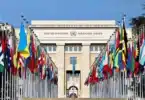While there is a sound international legal framework for human rights and freedoms, supported by most countries in the world, not all human rights documents can be translated in the exact same way across cultures. Many state officials have come together in an agreement on fundamental human freedoms and the composition of the documents which make these promises legally binding. Yet, these documents are not always written in consultation with local populations or local languages, which can create some confusion about what their provisions actually mean. So, when working with original human rights texts, most of which were written in English and/or French, it is essential to be particularly careful and understand any relevant local concepts that might influence the meaning of the texts.
Indeed, authors like Sally Engel Merry have previously argued that the only way to make human rights effective is to translate them and make them understandable to local populations and contexts. This is why all those who translate human rights content have another two tremendous tasks: bringing universal rights closer to the grassroots, and voicing local realities so that they can be comprehended by all.
We have identified five issues we should all be mindful of when translating human rights.
1. Finding the right word with the right meaning
In general, translation and interpretation are very difficult tasks not only because perfect fluency in at least two languages is needed, but also because not every word in one language translates to a different language so easily. Oftentimes, you will encounter a word that will not automatically trigger another word that is the exact same equivalent in the other language.
In many cases, this will be because there are two or more words which have similar meaning, and ambiguous differences between them. Consider, for instance, the right to a fair trial. In English, there is a clear difference between “fairness” and “justice”. In other languages, however, these two notions might not translate into two evidently different words. What’s important is to do your research and understand what the closest equivalent to the word “fair” would be in this case, provided there are several options. This is the only way you can really ensure that the meaning of the right is translated right, as we comprehend it and stand by it in English.
That said, whenever you are struggling, you should consider the origin of the word, both in English and in the local language, and not simply resort to a more commonly used word. For example, it is interesting to note that the word “victim”, of great importance in the human rights language, actually in many Western languages is the same as the word “sacrifice”. Yet, it would be wrong to approach it in this manner in every language. By knowing what your options are and what the etymology of the word suggests, you will on the right track to make certain everybody understands the concept the same way, even when the local word has a different origin than the original word.
2. Staying gender neutral
Another thing to keep in mind is the ways in which the two languages you are working with differ when it comes to the grammatical gender. More precisely, English verbs and adjectives do not have distinct masculine and feminine forms – saying that he or she or it “does” or “has” something all use the same verb form. Nevertheless, many languages do not function like that, but instead change adjectives and certain verb forms depending on whether the subject noun is feminine, masculine or neutral.
The reason this is important when translating human rights content is because failing to acknowledge different grammatical genders can actually exclude an entire group of people from being entitled to protection. At the same, it can erase any gender sensitivity deliberately included in a clause by, for example, not recognizing the corresponding feminine form in the local language.
Learn more about Gender Equality and Inclusion!
Consider criminal justice, for instance, and the term “accused”. All persons accused of committing a crime are entitled to a certain set of rights. In English, “the accused” refers to men, women and any accused people of any other gender. But in Spanish, and so many other languages, the word “acusado” has a masculine form and can therefore be interpreted as referring only to men who are accused. In that case, it would be fair to always stress the feminine version of the adjective, which in this case would be “acusada”, by writing “accusado/a”.
Similarly, in English, too, certain expressions that were biased towards men only, such as “mankind”, have now been changed to “humankind” to include everyone else. So, while once provisions in legal documents began with “Every man”, they now start with “Every person” or “Everyone”. That said, you should also be particularly careful not to resort to a gender-biased translations that would single out one sex.
3. Making sure the chosen word resonates with the law
For human rights content in particular, you always want to make sure that what you are saying corresponds with how domestic laws have been framed and what terminology they use. Even the simple word like “law” will have two different words and meanings in languages such as Russian, where prava (права) is the body of law (all law), but zakon (закон) is a law, or the law. In other words, although it is not wrong to say that law means prava in Russian, it would not make any legal sense to talk about a “prava” against domestic violence – yet, saying “prava cheloveka” for human rights does.
Other times, there might be two legally enforceable terms differing from one document to another. By way of example, the term “vulnerable”, used when talking about groups which are in particularly disadvantaged positions and require special care or attention, will in some languages like French be simply translated as “vulnérable”. However, in other languages, such as Serbian, this word will be translated as “endangered” (ugroženi) or “sensitive” (osetljivi) in different legal documents. Again, careful research is needed in order to know that the language you are using in your translations is a legally binding and enforceable language, and something that can be picked up by legal practitioners and policy-makers.
4. Adopting cultural sensitivity
As we know, it is frequently hard to find common traditions and beliefs between different groups living in the same country, let alone among different countries around the world. Consequently, translations, too, require some cultural sensitivity. Universal rights apply equally to all, so being culturally sensitive in this case does not mean saying that some rights do not apply to some cultures because they live differently. On the contrary, it means knowing whether the concept that needs to be translated exists in this particular culture, and if so, how it is phrased.
For example, the right to a family life is well-established by now, so of course you will want to argue everyone has this right regardless of what their mother tongue is. But even though many languages might have adopted a more westernized word that resembles to “family” by now, local populations could be calling their blood relatives “kinship”, on generally referring to a much broader network of relatives as their family. This of course differs from the Western concept of a nuclear family, but it most definitely does not mean the right to a family life is diminished for these people. The Inter-American Court of Human Rights, in particular, has been careful to expand the notion of “family” and those could who depend on the family’s breadwinner in certain indigenous cultures, such as the Mam in Guatemala. Overall, it is advisable to know what the concepts you are translating encompass in local contexts to assume how what you are translating could be interpreted by the readers.
5. Knowing that human rights can create new words
Finally, if you are struggling to find the right term for your translation, it might simply be the case that the term does not exist in this particular language. Yet, only because you cannot find the right term, it does not mean that the particular right or obligation you are translating does not apply to the people speaking this language.
A simple example would be the term “non-discrimination”. Coming from Western philosophical ideas of individualism, autonomy and equality, initially this concept was not easy to comprehend for individuals in many non-Western cultures. Yet, the right not to be discriminated has quickly transcended across the globe. Another more sensitive issue would be marital rape. Legally, marital rape is still acceptable and has not been outlawed in countries such as India. Being absent from the law often means that it is absent from the language, or that people find different terms to explain what is happening. But, even if there is no legal translation nor legal framework for it, this human rights violation should still be translated to local populations in the best possible way – because it is still a violation. Essentially, such an effort has a potential to create a new term for the violation in question, and to become legally enforceable in the future.
Because the state of human rights varies greatly around the world, translators should always try to learn how people are addressing a particular issue amongst themselves, even if their societies do not use the human rights language nor any legal means. After all, this is how we can push human rights forward in communities where the respect for them is lacking.
Translators sometimes need to be cultural mediators, too
We hope these tips show that translating human rights is a very difficult, yet important task. Because it is a crucial tool for making human rights more universal, translation requires translators to also be cultural mediators, bridging any gaps and misunderstandings that might exist between international and domestic frameworks. Meticulous work, one that is inclusive, corresponding to the legal realities at the domestic level, and aware of the potential to create new spaces for rights and freedoms, is the way human rights will go forward.












